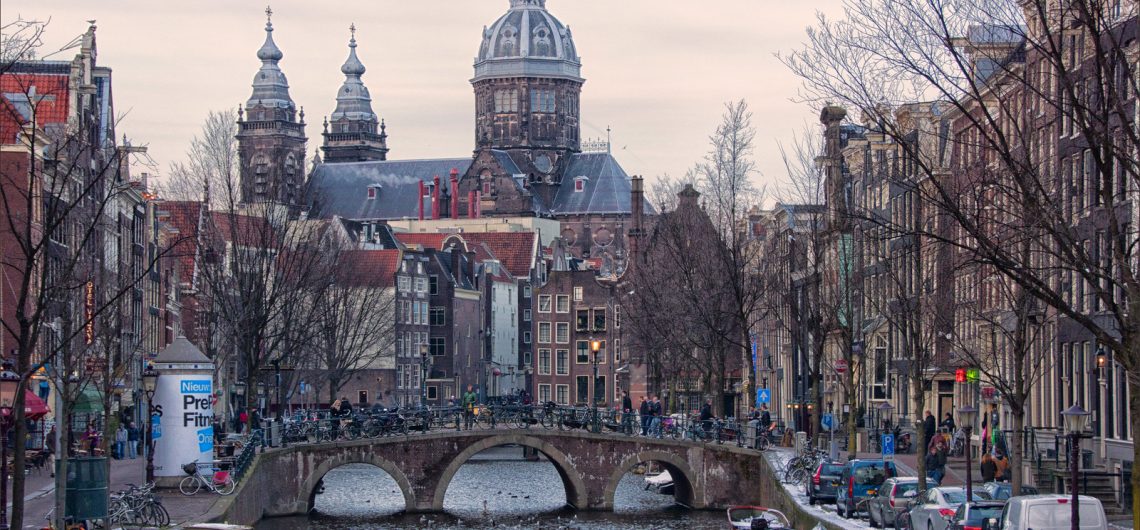The Amsterdam Red Light District, also known as De Wallen, has long been a controversial and polarizing part of the city. For years, it has been a popular destination for tourists from around the world, drawn by the allure of legal prostitution and the promise of a unique and exciting experience. However, in recent years, there has been growing concern about the impact that the Red Light District is having on the city and its residents, and many are calling for a change.
The Amsterdam Red Light District has a long and complicated history, dating back to the 15th century. Today, it is known for its famous red-lit windows, where sex workers stand and offer their services. However, the district has also been associated with criminal activity, including human trafficking and the exploitation of sex workers.
In recent years, the city of Amsterdam has taken steps to address these issues and reform the Red Light District. In 2020, the city council approved a series of measures designed to improve conditions for sex workers and reduce criminal activity in the district. These measures include a ban on guided tours of the Red Light District, stricter regulations for brothels, and the establishment of a sex worker cooperative.
Despite these efforts, the future of the Amsterdam Red Light District remains uncertain. Some activists and politicians are calling for the district to be phased out entirely, arguing that it perpetuates exploitation and objectification of women. Others argue that the district is an important part of Amsterdam’s cultural heritage and should be preserved.
If the Red Light District were to be phased out, it would have a significant impact on the city’s economy and tourism industry. The district is one of the city’s most popular tourist attractions, drawing millions of visitors each year. However, it is also a source of controversy and has been the subject of debate for many years.
The future of the Amsterdam Red Light District is uncertain, but one thing is clear: the status quo is no longer sustainable. Prostitution, drugs, and crime are rampant in the area, and many residents and business owners are fed up with the noise, the crowds, and the unsavory characters that frequent the district. In response to these concerns, the city government has taken steps to clean up the area and reduce the number of sex workers and brothels.
One proposal that has been put forward is to move the Red Light District to a new location outside of the city center. This would allow the city to better regulate the industry and provide sex workers with safer and more hygienic working conditions. It would also free up valuable real estate in the city center, which could be used for other purposes such as housing or businesses.
Another proposal is to shift the focus of the Red Light District away from sex work and towards other forms of entertainment and tourism. This could include museums, art galleries, and other cultural attractions that would still draw visitors to the area but without the negative aspects associated with prostitution.
However, both of these proposals are controversial and face significant opposition from various groups. Many argue that moving the Red Light District would simply shift the problem to a different part of the city and would not address the underlying issues of prostitution and exploitation. Others argue that the district is an important part of Amsterdam’s history and culture and should be preserved.
It is true that Amsterdam’s Red Light District has long been a major tourist attraction, drawing visitors from around the world to its iconic brothels, sex shops, and cafes. However, in recent years, there has been growing concern over the negative impact of the area on the city’s residents, particularly with regards to public safety, drug use, and human trafficking.
As a result, the city has taken a number of steps to address these issues and shape the future of the Red Light District. Here are some of the key developments to watch in the coming years:
- Closing some of the brothels and windows: The city has made it clear that it plans to reduce the number of brothels and windows in the Red Light District, which will lead to a smaller overall footprint for the area. This move is designed to reduce overcrowding, make the streets safer, and discourage human trafficking.
- Replacing sex work with other businesses: In addition to reducing the number of brothels, the city is encouraging new businesses to move into the area, particularly those that cater to the arts and culture. This will help to diversify the area and reduce its reliance on sex work as a primary industry.
- Restricting access: The city has implemented new restrictions on access to the Red Light District, including limits on the number of visitors allowed in the area at any given time. This will help to reduce overcrowding and make the streets safer for both visitors and residents.
- Promoting safety and awareness: The city is also investing in a number of initiatives designed to promote safety and awareness in the Red Light District, including increased police presence, CCTV cameras, and educational programs for visitors. These efforts will help to reduce crime and improve the overall experience of the area.
- Shifting attitudes towards sex work: Finally, the city is taking steps to shift the public’s attitudes towards sex work, particularly by reducing the stigma associated with the industry. This will help to create a more accepting and supportive environment for sex workers, while also reducing the negative impact of the industry on the surrounding community.
- One of the proposed changes is to reduce the number of brothels in the district. This would be done by buying out brothel owners and turning the buildings into shops, restaurants, and other businesses. The city has already bought out several brothels and is working to buy out more. This reduction in brothels would not only make the area safer but would also create more opportunities for other businesses.
- Another proposed change is to create a prostitution hotel outside the city center. This hotel would be a safe and regulated place for sex workers to operate. This idea has been met with mixed reactions, with some people arguing that it would push prostitution further into the shadows and make it harder to regulate.
Overall the future of Amsterdam’s Red Light District is likely to be shaped by a combination of these factors, with a focus on reducing overcrowding, promoting safety, and diversifying the area’s businesses. While change is never easy, these developments offer hope for a more sustainable and responsible future for one of the city’s most iconic neighborhoods.
Ultimately, the future of the Amsterdam Red Light District will depend on the city’s ability to find a solution that balances the interests of all parties involved. This will require a willingness to think creatively and to consider new approaches to addressing the complex issues at play.
As the city of Amsterdam continues to grapple with the issue of the Red Light District, it remains to be seen what the future holds. Regardless of what happens, it is clear that the Red Light District will continue to be a source of fascination and controversy for years to come. It is a unique part of Amsterdam’s identity, and it is unlikely that it will simply disappear overnight. However, with careful planning and a commitment to finding solutions that work for everyone, it may be possible to transform the Red Light District into something that all residents of Amsterdam can be proud of.

